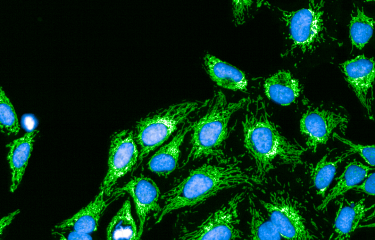Scientists have identified the function of a protein that plays a key role in the structure and mechanisms of cardiac muscle. This molecule appears to be fundamental to the efficient supply of energy to cells. This is a major breakthrough in our understanding of the biological mechanisms involved in certain cardiac diseases.
In addition to the nucleus containing the vast majority of genetic information, human cells also contain organelles that perform specific functions. Some of these organelles include mitochondria. Commonly referred to as "factories," their role is to provide energy to the cell. They play a crucial role and their dysfunction can have serious consequences for various essential and energy-consuming organs. Mitochondrial abnormalities are thus involved in various acquired cardiac diseases but can also affect other organs such as the brain. Despite the difficulty in diagnosing mitochondrial diseases due to the constellation of symptoms which they present, it is estimated that there are approximately 200 new cases per year in France. Because of the severity of the resulting symptoms, a better understanding of the biological mechanisms involved in mitochondrial diseases is essential.
MTFP1 is an essential molecule for cardiac muscle function...
Having identified the genetic causes of serious optical and neurological disorders, the "Mitochondrial Biology" team led by Timothy Wai, in collaboration with scientists from the Institut Pasteur's Technology Department and Bioinformatics and Biostatistics Hub, as well as researchers from the University Clinic Würzburg, focused on a mitochondrial protein, specifically Mitochondrial Fission Process 1 (MTFP1), an inner mitochondrial membrane protein. The scientists have highlighted the essential role of MTFP1 by observing the phenotype of genetically modified mice that lack the gene encoding this protein. The result? Adult mice that do not express this molecule develop a severe cardiac disorder known as dilated cardiomyopathy (DCM). This disease is characterized by remodeling of the left ventricle. This part of the cardiac muscle, which pumps oxygenated blood to the rest of the body, loses its shape and contractility. The disease course observed in mice results in heart failure and death.
...but is not essential for mitochondrial division
Although the scientists have demonstrated the essential character of MTFP1 in cardiac function and oxygenation, they wanted to know more about the role of MTFP1 within the mitochondria. "While we had initially started to study MTFP1 as a candidate factor regulating mitochondrial division, our in vitro and in vivo studies unexpectedly revealed that MTFP1 was in fact unnecessary for mitochondrial division," says Timothy Wai. By combining cellular, molecular and biochemical approaches, the researchers were able to demonstrate that MTFP1 forms a complex at the inner mitochondrial membrane. This complex is essential to maintain bioenergetic efficiency and to prevent the release of cell death factors within the mitochondria, which would then trigger the death of cardiac cells.
This research illustrates once again the importance of mitochondrial molecular mechanisms and their implications for cells and organs. More specifically, it represents a major advance in our understanding of the cellular mechanisms underlying certain severe pathologies such as ventricular dilatation of cardiac muscle. In France, dilated cardiomyopathy is currently the main indication for cardiac transplantation.
Source :
Mitochondrial Fission Process 1 controls inner membrane integrity and protects against heart failure, Nature Communications, November 4, 2022
DOI: 10.1038/s41467-022-34316-3
Erminia Donnarumma1, Michael Kohlhaas2, Elodie Vimont1, Etienne Kornobis3,4,Thibault Chaze5, Quentin Giai Gianetto4,5, Mariette Matondo5, Maryse Moya-Nilges6, Christoph Maack2 & Timothy Wai1
1 Institut Pasteur, Mitochondrial Biology Group, CNRS UMR 3691, Université Paris Cité, Paris, France.
2 Department of Translational Research, Comprehensive Heart Failure Center (CHFC), Medical Clinic 1, University Clinic Würzburg, Würzburg, Germany.
3 Institut Pasteur, Biomics Technological Platform, Université Paris Cité, Paris, France.
4 Institut Pasteur, Bioinformatics and Biostatistics Hub, Université Paris Cité, Paris, France.
5 Institut Pasteur, Proteomics Core Facility, MSBio UTechS, UAR CNRS 2024, Université Paris Cité, Paris, France.
6 Institut Pasteur Ultrastructural BioImaging UTechS, Université Paris Cité, Paris, France.








